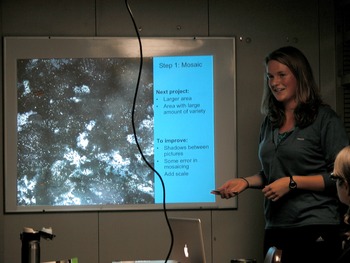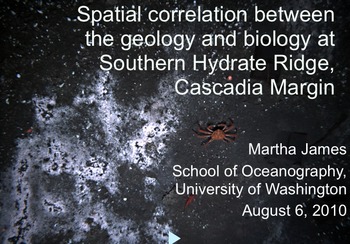Martha James: Spatial Correlation Between the Geology and Biology at SHR
I will examine potential spatial correlations between sea floor bathymetry, sediment and rock cover indicative of methane hydrates, and location of biological activity. To do this I will pick a region and create a topographical map of the area and then categorize regions depending on their slopes. I will then mosaic still imagery of the region to determine where different sediment or rock substrates occur and biological activity flourishes. I will categorize rock cover into carbonate pavement, large/small/scattered carbonate rubble, and sediment into the percent of area it covers. I will categorize biology by microbial mats, clam colonies, areas with a plethora of macro fauna, and areas that contain evidence of past biological activity such as old clamshells. I will also note areas that have active seepage indicated by biological activity or by bubbles. I will then compile this data into a map that includes bathymetry.
Results from this study may show evidence through the sediments, rocks, and past and present biology how venting has moved through time. This could determine how far and when biological communities are moving, and if their locations are related to the sediment and rock. Additionally, determining where the vents are, or have been active, is necessary to pick an appropriate site for nodes around Hydrate Ridge—a spot that is both exciting, but safe for expensive equipment.



